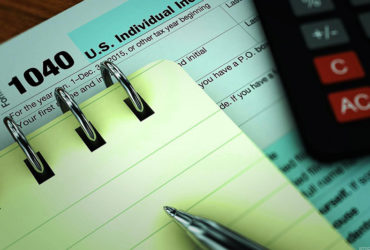In previous articles we talked about the different tax brackets for the Alternative Minimum Tax and the Regular Tax, and the AMT exemption and how its phase-out throws a lot of people into the AMT. This was a review of the income side of the AMT calculation – i.e., how a taxpayer’s income level can act like a vortex pulling him into the AMT. Now we are shifting gears and addressing the deduction side of the calculation.
The bulk of the AMT problem actually comes from the deduction side – specifically, deductions that an individual is allowed to take in computing the Regular Tax but is not allowed to take for the AMT. Of the different types of deductions, some are not allowed at all for the AMT, while others are allowed but to a lesser extent than they are allowed for the Regular Tax.
The deductions that are allowed for the Regular Tax but are not allowed at all for the Alternative Minimum Tax are the following:
• deduction for state and local taxes
• miscellaneous itemized deductions
• standard deduction
• deduction for personal exemptions
The deductions that are allowed for the Regular Tax but are allowed only to a lesser extent for the AMT are these:
• itemized deduction for medical and dental expenses
• the deduction for interest paid
• many business expenses such as depreciation, depletion, and research expenses, among others
Of the deductions listed above, the single one that impacts almost every individual caught in the AMT trap is the deduction for state and local taxes. (State and local taxes affect more than 90% of all AMT payers.) These are relatively large dollar items for most taxpayers, and, as mentioned above, they are not deductible at all for the AMT.
The term "state and local taxes" includes the following:
State income taxes. Forty-three states impose a state income tax, and some of them – New York and California come to mind along with numerous others – have fairly high tax rates for folks who are at the income levels already being affected by the AMT. (Residents of the following states are the lucky ones who do not share this burden: Alaska, Florida, Nevada, South Dakota, Texas, Washington and Wyoming.)
Local income taxes. Many cities across the United States impose their own income taxes. New York City, of course, has one, and other cities across the nation – Louisville, Kentucky is one other example – also have them. New York City’s tax rate ranges from 2.9% to 3.6% of taxable income, while Louisville’s is 2.2% on gross earned income – no deductions allowed. Taxes like these quickly compound the AMT problem.
Real estate taxes. Owners of real estate pay property taxes on the value of the property (an "ad valorem" tax). Many states – you know if you live in one – have high property taxes. Again, a big AMT problem.
Personal property taxes. It is not uncommon for states and local jurisdictions to impose a property tax on personal property. "Personal" is a legal term meaning tangible but moveable property such as cars and boats. Check the tag renewal notice on your car, for example, to see how much this is.
Sales taxes. All states but six impose a sales tax. On the Federal return the taxpayer has an option to deduct state and local sales taxes in lieu of income taxes. In the seven states with no income tax this election generally proves beneficial in computing the Regular Tax – but of course it is no help when it comes to the AMT.
















